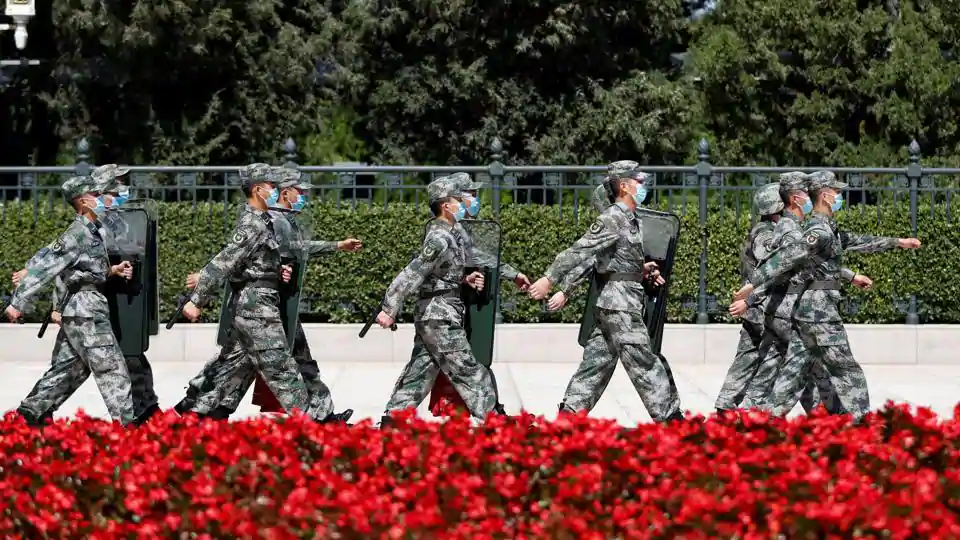
SOURCE: HT
Chinese social media and websites have lately been peppered with news articles and analyses on how well-prepared the People’s Liberation Army (PLA) is to take on the Indian Army, referencing the 1962 India-China war as a precedent.
Amid the ongoing India-China border tension, several articles on the October-November one-month war in1962 are being shared on Chinese social media where the PLA is being depicted as a superior, peace-loving armed force, always ready to treat enemy soldiers humanely.
The write-ups in Mandarin portray India as the aggressor and China being forced to “counterattack”.
Many among those who are sharing the write-ups on social media are “military enthusiasts”, Shanghai-based military expert Ni Lexiong told HT, and most use aliases.
Given the Chinese government’s tight online censorship, the propaganda clearly has Beijing’s backing.
It’s a mix of new analysis and old articles being republished – clearly with China’s millions of online domestic audience as focus. Black-and-white photos from the war and prisoner-of-war (POW) camps accompany the write-ups.
A latest example is an account of the 1962 war written by a PLA Hindi translator. The translator Yang Zhifang’s account has been published before in Chinese military blogs, but the PLA’s “psyops” department seemed to have found it to be an opportune moment to publicise it – seemingly as an example of the PLA’s compassion.
Published and circulated on the social media platform WeChat, Yang’s account talks about how the PLA had deployed a team of Hindi, Urdu, Nepalese and English language experts among regular Chinese troops in Xinjiang to talk to Indian troops during the 1962 war.
Yang graduated from Beijing’s Peking University with a major in Hindi in the department of oriental languages in 1961.
“Unfortunately, before October 1962, I was the only professionally trained Hindi (translator) in the western section of the border,” wrote Yang.
Yang’s “specific” task at the time was to translate certain Chinese sentences or slogans as he called them – into Hindi.
“The content of the slogans was issued by the superiors, mainly: ‘Hand in the gun and not kill’, ‘Raise your hand’, ‘Come out’, ‘We treat captives with mercy’, ‘Don’t move’, ‘Follow me’. Six sentences, translated into Hindi and English by us.”
Yang then goes on to give an account of how well the PLA treated Indian POWs, including showing them popular Indian movies like Awaara and Do Bigha Zameen.
Analytical articles online are giving examples of the 1962 war as a warning for India.
Besides India, self-ruled Taiwan has been at the receiving end of such military posturing with academics laying down the detailed sequence of how the PLA could overrun the island and take control.
In one analysis published on an academic website, the author, who goes by the Chinese name that translates into “A Green Tree”, argued – with the 1962 war as background – that because the Qinghai-Tibet plateau belongs to China, it can never lose a war with India.
The author wrote earlier this September that China, for example, is now much better prepared logistically compared to 1962 to replenish its troops near the Arunachal Pradesh border.
“In 1962, it was very difficult for China to maintain the normal supply for tens of thousands of troops stationed in Tibet… The strength of material delivery capabilities directly determines the strength of the PLA’s combat on the Sino-Indian border,” the author wrote, indicating that Chinese areas bordering the Indian state are now fully, and more easily, accessible by the Tibet military command.
Li Guangman, a senior researcher with the Beijing-based Kunlun Strategy Research Institute, wrote in his blog that neither India nor China are what they were during the 1962 war, but that India’s aggression is “unacceptable”.
“In 1962… the two superpowers, the US, and the Soviet Union, both threatened China militarily, rushing to support India by providing amounts of weapons and equipment. It was also the time that China had just had three years of serious natural disasters, but it did not compromise with India,” Li wrote.
“Instead, China resolutely launched a self-defence counterattack, frustrated India’s swelling ambitions heavily, and got decades of peace on its western border.”






